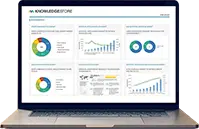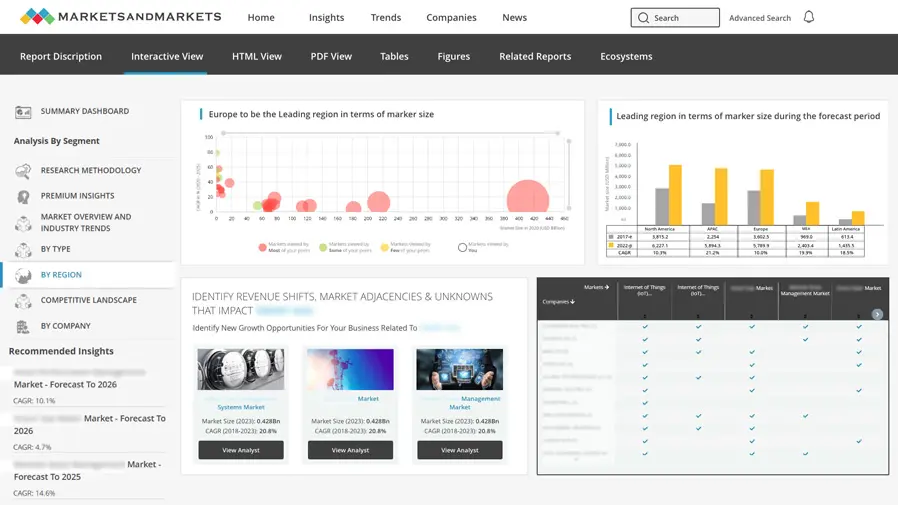Quantum Random Number Generator Market - Global Forecast to 2030
The global Quantum Random Number Generator (QRNG) market size is projected to grow from USD XXX Million in 2024 to USD XXX Million by 2030 at a Compound Annual Growth Rate (CAGR) of XX.X% during the forecast period. There is a rising demand for QRNG across digital applications in response to increasing cyber threats and advancements in quantum computing.
Unlike traditional RNGs, which can be compromised, QRNGs use quantum mechanics to generate truly random and unpredictable numbers, providing unmatched security for encryption, cryptographic keys, and secure communications. Finance, blockchain, telecommunication, and governmental defense industries rely on QRNGs to secure sensitive data, meet regulatory standards, and protect infrastructure. Blockchain technology, cryptocurrencies, and decentralized finance are increasingly growing, and the demand for QRNG to maintain the integrity of cryptographic protocols is increasing.
Due to governmental agencies’ more vigorous regulation enforcement, incorporating QRNG into emerging technologies such as IoT devices, AI, machine learning, and quantum computing has improved system performance and security. While still facing cost and scalability issues, progress in miniaturization and commercialization is making QRNGs increasingly accessible. QRNGs are gaining wide acceptance with cloud-based solutions. QRNGs create secure and future-proof digital ecosystems across industries to safeguard companies from evolving cyber threats.

To know about the assumptions considered for the study, Request for Free Sample Report

QRNG MARKET DYNAMICS
Driver: Rising regulatory Push for Secure Cryptographic Systems
Governments across the globe are imposing tighter regulations on cryptographic systems in light of increasing concerns about privacy, security, and cyber threats. Such regulations necessitate increased data encryption, where QRNGs come into play to provide the randomness needed for the cryptographic keys. Since they utilize quantum phenomena, QRNGs offer more unpredictability, which is necessary for secure encryption. Due to this, governments and private players are investing more in quantum technologies, including QRNGs.
Industries like finance, healthcare, and telecom are adopting QRNGs to meet requirements under regulations such as GDPR, thereby strengthening cybersecurity. Another aspect is that, with quantum computing becoming an integral component of mainstream technology, regulators would begin to think about how QRNGs will future-proof their cryptographic systems against emerging threats. International cooperation over cryptographic policies is also critical for ensuring secure global communication. The regulatory push pushes the adoption of QRNGs as a key component of safe, future-proof cryptographic systems in the digital age.
Restraint: Technical Challenges in Integration
QRNGs have massive optical and electronic components sensitive to environmental conditions, so making them work dependably in various environments is challenging. Compatibility problems also arise when QRNGs are interfaced with legacy systems not designed for quantum technology, thus requiring costly adaptations and middleware. High-demand applications are still far away, as scaling up applications is challenging, especially for cryptography. The costs of QRNG technology are much higher than those of traditional solutions, creating economic concerns. It is being made possible by joint efforts to enhance the technology, establish standards, and make it economically feasible to unlock the potential of QRNG in improving data security in cryptographic applications.
Opportunity: Integration with Emerging IoT Devices
The expanding IoT ecosystem has a transformative solution in QRNG, which can provide better security through true randomness generated based on quantum phenomena instead of traditional pseudo-random number generators (PRNGs) in generating cryptographic protection. Healthcare applications include securing sensitive patient data in IoT wearables automotive, which enables secure communication in connected vehicles and V2X technologies and smart cities that protect critical data from the urban IoT sensors. Advancements in miniaturizing QRNG, such as the compact chip by ID Quantique’s Quantis chip, make seamless integration within IoT devices easy.
Challenge: Competition from Classical Random Number Generators
QRNGs compete with traditional random number generators, particularly PRNGs, in most markets due to their cost-effectiveness, simplicity, and most suitable security. PRNGs are cheap, easy to integrate, and good enough for non-critical tasks, making them accessible to many people. However, they have some advantages over them. True randomness of PRNGs relies entirely on the quantum phenomenon and is, therefore, considered a requirement for high-security applications. For example, cryptography needs maximum resistance to manipulation.
QRNG Market Ecosystem
The QRNG ecosystem has hardware-based and software-based QRNG providers. For example, hardware QRNGs use quantum phenomena like photon entanglement and quantum tunneling to generate randomness, and software QRNGs leverage cloud-based quantum computing, atmospheric noise, or quantum hardware APIs to generate remote randomness.

To know about the assumptions considered for the study, download the pdf brochure
Based on the offering, the Hardware Component will dominate the market during the forecast period.
Hardware-based QRNG solutions provide a reasonable degree of randomness and security, making them indispensable for safe communication and data protection. Advances in the hardware associated with quantum computing and quantum technologies make QRNG systems more efficient and reliable. Hardware-based QRNGs outperform software-based solutions regarding speed, security, and randomness quality. They can generate high-speed random numbers in a way and at an unpredictability level that the software-based systems cannot match up to. Hardware QRNGs comply with the most stringent security and compliance standards so that organizations seeking government regulations or international standards will most likely be attracted to them. The price of quantum hardware components is decreasing due to improvements in production facilities and technological advancements. Hence, they are accessible to a much wider range of industries. As more and more manufacturers enter the market and competition increases, hardware QRNGs are becoming more affordable, and companies can implement these solutions on a larger scale.
The Academia & Research vertical is expected to grow at the highest CAGR during the forecast period.
Academic institutes and research organizations are expected to swiftly adopt and expand their technology as part of QRNG during the forecast period. Academia and research require highly secure applications to achieve secure randomness to establish and develop algorithms within simulated fields like quantum computing and cryptographic tools for secure communications. The convergence of QRNGs with quantum algorithms leads to a growing necessity for QRNG technology within research projects and academic studies in universities and research labs, where investments are high regarding quantum technologies, and the use of QRNGs makes it essential to develop further cryptographic security and quantum algorithms within quantum technologies. Academic research in the quantum technology area receives increased governmental and private funding, allowing institutions to use advanced technologies such as QRNGs.
Based on region, North America is expected to account for the largest market size during the forecast period.
North America is expected to grow significantly. North America, mainly the United States, highly invests in quantum technologies, such as quantum computing and cryptography, which drives the market growth. Meanwhile, several tech giants and startups are actively working on quantum technologies, thus making QRNGs a core application. Many such organizations are working with academic institutes and governments to push forward quantum-based solutions. QRNG is expected to be the future of secure digital infrastructures due to the growing investments in quantum research, increased demands for cybersecurity, and applications spread across finance, government, and defense.

Key Market Players
The key players in the QRNG market are Toshiba (Japan), NXP Semiconductor (Netherlands), QuantumCtek (China), Quintessence Labs (Australia), ID Quantique (Switzerland), MagiQ Technologies (US), Crypta Labs (UK), Nucrypt (US), Qutools (Germany), and Qrypt (US).
Recent Developments:
- In August 2024, SK Telecom and ID Quantique launched the Samsung Galaxy Quantum 5, integrating quantum security and Samsung Knox for enhanced mobile protection. The phone features the world’s smallest Quantum Random Number Generator (QRNG) chip, providing secure authentication and encryption. It safeguards sensitive data like fingerprints and facial images during login and payment processes while offering advanced AI capabilities, night photography, and a refined design.
- In August 2024, IBM’s quantum-safe cryptographic algorithms were officially published as part of NIST’s first post-quantum cryptography standards. Among the three new standards, IBM’s ML-KEM (CRYSTALS-Kyber) and ML-DSA (CRYSTALS-Dilithium) were developed with industry partners. At the same time, SLH-DSA (SPHINCS+) was co-developed by a researcher now at IBM. These standards are crucial for securing data against future quantum computer threats.
- In May 2024, Toshiba developed a QRNG fully integrated into semiconductor chips, ready for mass manufacture using standard processes. This design, which eliminates optical input/output components, enhances compactness and power efficiency. The chips can be assembled using surface-mount technology, facilitating widespread adoption in electronics.
Frequently Asked Questions (FAQ):
What are the opportunities in the global QRNG market?
What is the definition of the QRNG market?
Which region is expected to show the highest market share in the QRNG market?
What are the major market players covered in the report?
What is the current size of the global QRNG market?
















Growth opportunities and latent adjacency in Quantum Random Number Generator Market